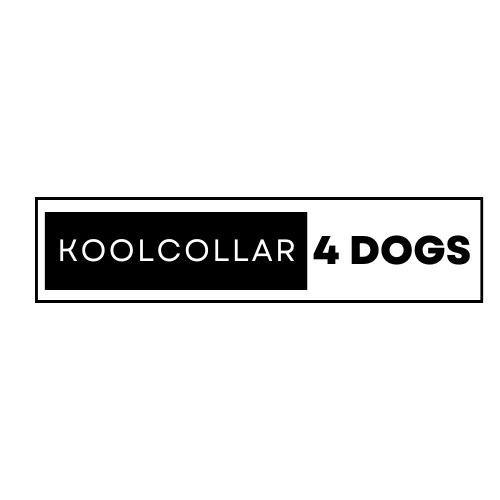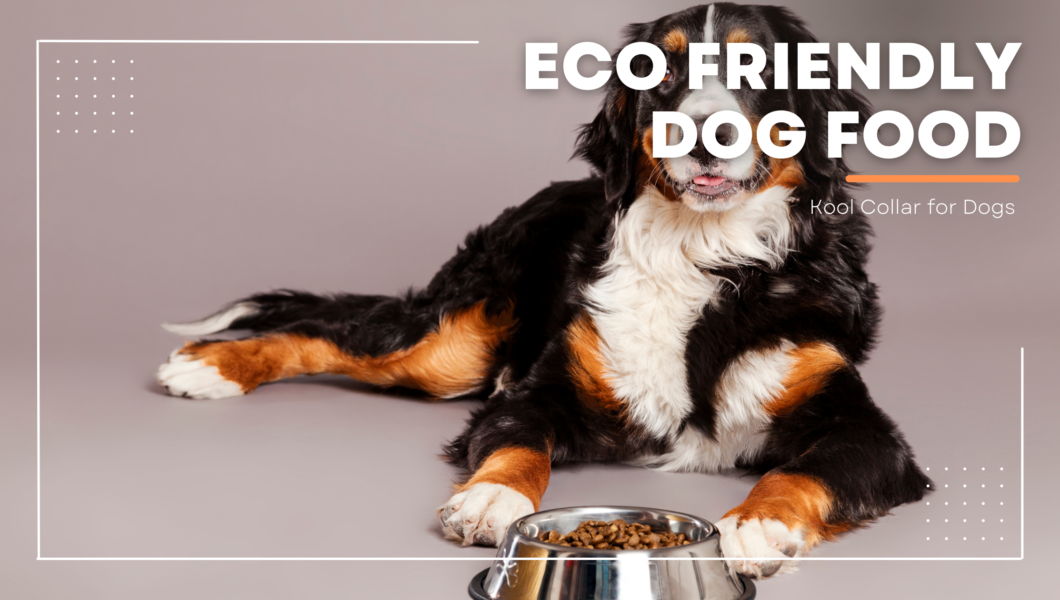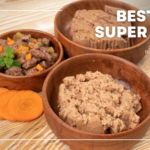Understanding eco friendly dog food
As a responsible pet owner, I firmly believe that our furry companions deserve not only nutritious sustenance but also a diet that aligns with our commitment to environmental stewardship. In recent years, the concept of eco friendly dog food has gained traction, offering a sustainable solution that caters to the well-being of our canine friends while minimizing the ecological footprint.
Eco friendly dog food is a term that encompasses various aspects, from the sourcing of ingredients to the manufacturing processes and packaging materials. It is a holistic approach that considers the impact on the environment throughout the entire supply chain, ensuring that our beloved pets can enjoy a wholesome meal without compromising the planet’s resources.
By embracing eco friendly dog food, we can contribute to a greener future while simultaneously providing our furry companions with the nourishment they require. It is a win-win situation that allows us to cherish our dogs’ happiness while upholding our commitment to sustainability.
Also Read Yumwoof vs Sundays
Benefits of eco-friendly dog food
Choosing eco friendly dog food offers a multitude of benefits that extend beyond just environmental considerations. Here are some compelling reasons to make the switch:
- Reduced Environmental Impact: Eco friendly dog food is typically produced using sustainable farming practices, minimizing the use of harmful pesticides and preserving natural resources. Additionally, many brands prioritize eco-friendly packaging, reducing waste and promoting a circular economy.
- Healthier Ingredients: Eco friendly dog food brands often prioritize the use of organic, non-GMO, and locally sourced ingredients. These high-quality ingredients are not only better for your dog’s health but also contribute to a lower carbon footprint by reducing transportation emissions.
- Ethical Sourcing: Many eco friendly dog food companies place a strong emphasis on ethical sourcing, ensuring that their ingredients are obtained through responsible and humane practices. This includes supporting sustainable farming methods and promoting fair labor practices throughout the supply chain.
- Improved Pet Health: By opting for eco friendly dog food, you can provide your furry friend with a diet rich in essential nutrients and free from harmful additives or preservatives. This can lead to improved overall health, increased energy levels, and a stronger immune system for your beloved companion.
Common ingredients to avoid in dog food
While exploring eco friendly dog food options, it is crucial to be mindful of certain ingredients that may be detrimental to both your pet’s health and the environment. Here are some common ingredients to avoid:
- Artificial Preservatives: Synthetic preservatives like BHA, BHT, and ethoxyquin are often used to extend the shelf life of dog food but can potentially cause adverse health effects in pets. Eco friendly dog food brands typically opt for natural preservatives or rely on proper packaging and storage methods.
- Meat By-products: Meat by-products are the leftover parts of animals that are not typically consumed by humans, such as beaks, feet, and internal organs. These ingredients are often of lower quality and may contain contaminants or hormones that can be harmful to your dog’s health.
- Artificial Colors and Flavors: Synthetic colors and flavors are added to enhance the appearance and taste of dog food but offer no nutritional value. Many eco friendly dog food brands steer clear of these additives, relying instead on natural ingredients to provide a flavorful and visually appealing meal for your pet.
- Genetically Modified Organisms (GMOs): The use of genetically modified crops in pet food is a controversial topic, with potential environmental and health concerns. Eco friendly dog food brands typically prioritize the use of non-GMO ingredients to ensure a more sustainable and safer option for your furry friend.
How to read dog food labels for eco-friendly options
Navigating the world of dog food labels can be a daunting task, but with a little guidance, you can easily identify eco-friendly options. Here’s what to look for:
- Organic Certification: Look for dog food brands that carry organic certifications, such as the USDA Organic seal or the Non-GMO Project Verified label. These certifications ensure that the ingredients used are grown without the use of synthetic pesticides, fertilizers, or genetically modified organisms (GMOs).
- Ingredient List: Scrutinize the ingredient list. Eco friendly dog food brands typically prioritize whole, recognizable ingredients like meat, vegetables, and grains. Avoid products with lengthy lists of unfamiliar or hard-to-pronounce ingredients.
- Sustainable Sourcing Claims: Look for labels that highlight sustainable sourcing practices, such as “responsibly sourced,” “ethically raised,” or “sustainably farmed.” These claims indicate that the brand prioritizes environmentally friendly and ethical production methods.
- Eco-friendly Packaging: Pay attention to the packaging materials used. Eco-friendly dog food brands often opt for recyclable or compostable packaging, such as paper bags or BPA-free cans, to minimize their environmental impact.
Remember, reading labels carefully and educating yourself on the various certifications and claims can help you make an informed decision when choosing an eco-friendly dog food option for your furry companion.
Sustainable sourcing in dog food production
Sustainable sourcing is a critical aspect of eco-friendly dog food production, as it ensures that the ingredients used are obtained through environmentally responsible and ethical practices. Here are some key elements to consider:
- Responsible Farming Practices: Eco-friendly dog food brands often source their ingredients from farms that prioritize sustainable agriculture methods. These practices may include crop rotation, integrated pest management, and water conservation techniques, minimizing the environmental impact while ensuring a high-quality yield.
- Local and Seasonal Sourcing: By sourcing ingredients locally and seasonally, eco-friendly dog food brands can reduce their carbon footprint associated with transportation and support regional economies. This approach also ensures that the ingredients are fresh and at their peak nutritional value.
- Ethical Animal Welfare: For pet food products containing animal-based ingredients, it is essential to consider the welfare of the animals involved. Eco-friendly dog food brands often partner with farms or suppliers that adhere to strict animal welfare standards, ensuring that the animals are raised in humane conditions and treated with respect.
- Fair Labor Practices: Sustainable sourcing extends beyond just the ingredients themselves. Eco-friendly dog food companies often prioritize fair labor practices throughout their supply chain, ensuring that workers are treated fairly and provided with safe working conditions and fair compensation.
By prioritizing sustainable sourcing, eco-friendly dog food brands contribute to a more environmentally responsible and ethical food system, promoting a healthier planet for both our furry companions and future generations.
Nutritional considerations for eco-friendly dog food
While embracing eco-friendly dog food is a commendable step towards sustainability, it is equally important to ensure that your furry friend receives the necessary nutrients for optimal health and well-being. Here are some nutritional considerations to keep in mind:
- Balanced Nutrition: A well-formulated eco-friendly dog food should provide a complete and balanced diet, meeting all the essential nutrient requirements for your dog’s life stage and activity level. This includes an appropriate balance of proteins, fats, carbohydrates, vitamins, and minerals.
- High-Quality Protein Sources: Protein is a crucial component of a dog’s diet, and eco-friendly dog food brands often prioritize high-quality, ethically sourced protein sources. Look for products that contain lean meats, fish, or plant-based proteins like legumes or grains.
- Digestible Carbohydrates: While dogs don’t require as many carbohydrates as humans, they still need a moderate amount for energy and fiber. Eco-friendly dog food brands often use whole grains, vegetables, or legumes as sources of digestible carbohydrates.
- Essential Fatty Acids: Omega-3 and omega-6 fatty acids are essential for maintaining a healthy coat, skin, and overall immune function in dogs. Eco-friendly dog food brands may include sources like flaxseed, fish oil, or plant-based oils to provide these essential nutrients.
- Probiotics and Prebiotics: A healthy gut is crucial for overall well-being, and many eco-friendly dog food brands incorporate probiotics and prebiotics to support digestive health and a strong immune system.
Remember, every dog has unique nutritional needs based on their age, breed, activity level, and overall health. Consulting with a veterinarian or a certified pet nutritionist can help you make an informed decision and ensure that your eco-friendly dog food choice meets your furry friend’s specific dietary requirements.
A Guide to Choosing the Best Low Fat Dog Food for Sensitive Stomachs
Popular brands of eco-friendly dog food
As the demand for eco-friendly dog food continues to grow, numerous brands have emerged, offering a wide range of sustainable and nutritious options. Here are some popular choices to consider:
- Castor & Pollux: This brand is dedicated to using organic, non-GMO ingredients and prioritizes sustainable sourcing practices. Their dog food line includes grain-free and limited-ingredient options.
- Honest Kitchen: Known for their human-grade, dehydrated dog food, Honest Kitchen uses responsibly sourced, non-GMO ingredients and eco-friendly packaging.
- Solid Gold: With a focus on holistic nutrition, Solid Gold offers a variety of eco-friendly dog food options, including grain-free and limited-ingredient formulas made with responsibly sourced ingredients.
- Tender & True: This brand prioritizes sustainable sourcing, using organic, non-GMO ingredients and eco-friendly packaging. Their dog food line includes both dry and wet options.
- Gather: Gather is committed to using responsibly sourced, high-quality ingredients and partners with sustainable farmers and suppliers. Their dog food line features various protein sources and grain-free options.
- Open Farm: With a commitment to transparency and sustainability, Open Farm offers ethically sourced, humanely raised, and non-GMO dog food options.
Remember, it’s always a good idea to research and read the labels carefully to ensure that the brand aligns with your values and your furry friend’s nutritional needs.
Read Best Dog Super Food
Homemade eco-friendly dog food recipes
While store-bought eco-friendly dog food options are convenient, some pet owners prefer to take a more hands-on approach by preparing homemade meals for their furry companions. Here are a few eco-friendly and nutritious homemade dog food recipes to consider:
Wholesome Beef and Veggie Stew
Ingredients:
- 1 lb lean ground beef (grass-fed and organic)
- 2 cups cooked brown rice or quinoa
- 1 cup diced carrots
- 1 cup diced sweet potatoes
- 1/2 cup frozen peas
- 1/4 cup chopped parsley
- 1 tablespoon coconut oil
Instructions:
- In a large pot, cook the ground beef over medium heat until browned and crumbled.
- Add the cooked brown rice or quinoa, carrots, sweet potatoes, peas, parsley, and coconut oil.
- Stir well and cook for an additional 5-10 minutes, or until the vegetables are tender.
- Let the mixture cool before serving to your furry friend.
Lentil and Salmon Patties
Ingredients:
- 1 cup cooked lentils
- 1/2 cup cooked salmon (wild-caught and sustainable)
- 1/2 cup cooked brown rice
- 1 egg (organic and free-range)
- 1/4 cup chopped fresh parsley
- 1 tablespoon ground flaxseed
Instructions:
- In a large bowl, mash the cooked lentils and salmon together with a fork.
- Add the cooked brown rice, egg, parsley, and ground flaxseed, and mix well.
- Form the mixture into patties and place them on a parchment-lined baking sheet.
- Bake at 350°F (175°C) for 20-25 minutes, or until the patties are firm and slightly golden.
- Let the patties cool before serving to your pup.
Chicken and Veggie Medley
Ingredients:
- 1 lb boneless, skinless chicken breasts (organic and free-range)
- 1 cup cooked brown rice
- 1 cup diced zucchini
- 1 cup diced bell peppers
- 1/4 cup chopped fresh parsley
- 1 tablespoon coconut oil
Instructions:
- Cook the chicken breasts until fully cooked through, then shred or dice into small pieces.
- In a large skillet, heat the coconut oil over medium heat.
- Add the shredded chicken, cooked brown rice, zucchini, bell peppers, and parsley.
- Stir well and cook for an additional 5-7 minutes, or until the vegetables are tender.
- Let the mixture cool before serving to your furry friend.
Remember, when preparing homemade dog food, it’s essential to ensure that the ingredients are fresh, high-quality, and properly balanced to meet your dog’s nutritional needs. Consulting with a veterinarian or a certified pet nutritionist can help you create a well-rounded and balanced homemade diet for your furry companion.
Transitioning your dog to eco-friendly food
Switching your dog’s diet to an eco-friendly option is a commendable step towards sustainability, but it’s essential to make the transition gradually to avoid digestive upset or other potential issues. Here’s a step-by-step guide to help you make the change smoothly:
- Start Slowly: Begin by mixing a small amount of the new eco-friendly dog food with your dog’s current food. Start with a ratio of 25% new food and 75% old food, and gradually increase the proportion of the new food over the course of a week or two.
- Monitor Your Dog’s Reaction: During the transition period, closely observe your dog’s appetite, digestion, and overall well-being. If you notice any adverse reactions, such as vomiting, diarrhea, or loss of appetite, slow down the transition process or consult with your veterinarian.
- Introduce New Proteins Carefully: If the new eco-friendly dog food contains a different protein source than your dog’s previous diet, it’s important to introduce it gradually. Some dogs may experience digestive issues when switching between different protein sources abruptly.
- Adjust Portion Sizes: Different dog food brands and formulas may have varying caloric densities. During the transition period, monitor your dog’s weight and adjust portion sizes accordingly to maintain a healthy body condition.
- Provide Plenty of Fresh Water: Ensure that your dog has access to clean, fresh water at all times, as dietary changes can sometimes lead to increased thirst or dehydration.
- Be Patient: The transition process may take several weeks or even months, depending on your dog’s individual needs and preferences. Be patient and consistent, and celebrate small victories along the way.
Remember, every dog is unique, and some may adapt to the new eco-friendly diet more quickly than others. If you encounter any persistent issues or concerns, don’t hesitate to consult with your veterinarian for guidance and support.
Conclusion: Making the best choice for your furry friend
Choosing the best eco-friendly dog food is a thoughtful decision that not only benefits your beloved furry companion but also contributes to a more sustainable future for our planet. By embracing eco-friendly options, you can provide your dog with a nutritious and wholesome diet while minimizing your environmental impact.
Throughout this guide, we’ve explored the various aspects of eco-friendly dog food, from understanding the benefits and common ingredients to avoid, to reading labels, sustainable sourcing practices, and nutritional considerations. We’ve also delved into popular eco-friendly dog food brands and shared delicious homemade recipes for those who prefer a more hands-on approach.
Remember, the journey towards an eco-friendly lifestyle is ongoing, and every small step counts. By making conscious choices for your furry friend’s diet, you are not only nurturing their health but also setting an example for others and contributing to a greener, more sustainable world.
If you’re ready to embark on the eco-friendly journey and provide your furry companion with a sustainable and nutritious diet, visit our online store for a wide range of carefully curated eco-friendly dog food options. Our knowledgeable team is always available to guide you in making the best choice for your furry friend’s specific needs and preferences.
Embrace the power of eco-friendly dog food and join the growing community of responsible pet owners who are making a positive impact, one meal at a time.


